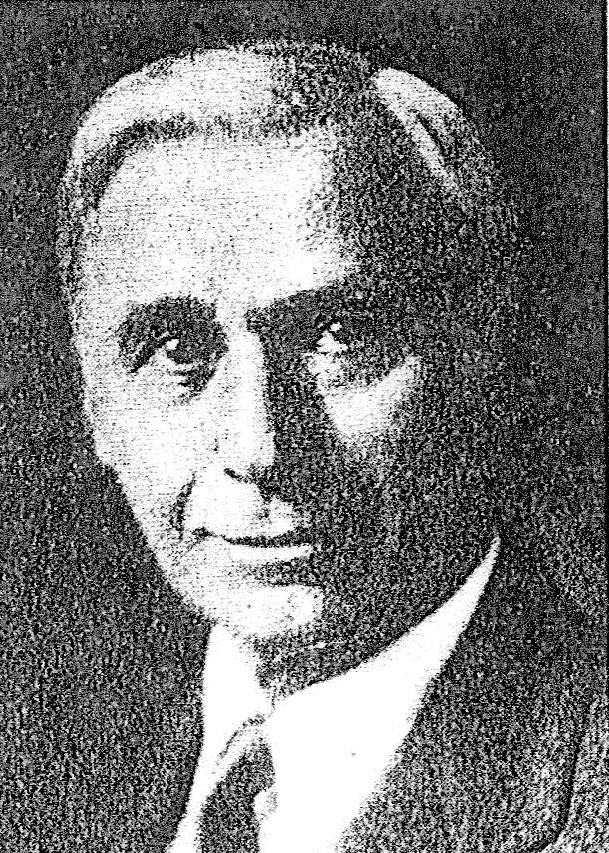
August Klagstad 1866-1949
Reared in a remote Upper Peninsula lumbering settlement, August Klagstad toiled in the mill piling pine slabs. But the high-pitched whine of the big saws could not drown out his dreams for a brighter future. When he exchanged his leather work gloves for brushes and a palette of oils—an artist emerged. A faithful Lutheran, Klagstad specialized in religious paintings. Today, Klagstad’s altar paintings can be found in churches throughout the United States. His “sermons on canvas” have inspired generations of worshipers in Michigan and across the nation.
August Klagstad was born in Modum, Norway on August 14, 1866, the seventh of nine children of Torger and Karen Klagstad. August’s father was a farmer who tilled the worn-out Norwegian soil and struggled to provide for his growing family. In 1871, with virtually no prospects for a better future, his parents made a momentous decision—they would immigrate to America. The family, including 5 year old August and three of his siblings departed Drammen, Norway during the first week of May, 1871. The three oldest children remained behind until there was money enough to send for them. The emigrants set sail on the barque Flora, rather than a faster, more expensive steamship. Calm winds extended their crossing to seven weeks.
On the 4th of July, 1871, the Klagstads finally arrived at their destination in Racine, Wisconsin. While in Racine, August’s father heard that a lumber company in Monistique, (later known as Manistique) wanted laborers to work in the mill. Free transportation was provided on the schooner Express. As the schooner arrived at the dock in Manistique, the family peered out on the forlorn landscape. A sawdust road led from the harbor to the settlement, which consisted of a saw mill, company store and a half-dozen unpainted houses. August’s mother, Karen Klagstad, was so disappointed that she sat down by the side of the road and wept.
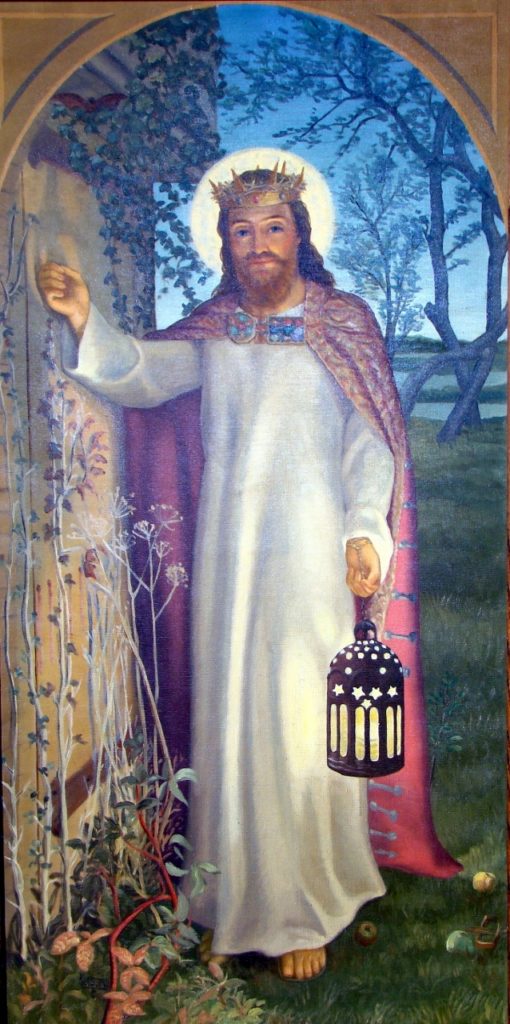
“Light of the World” an altar painting by August Klagstad, courtesy of Pleasant Valley Church of the Brethren in Weyers Cave, Virginia
But the Klagstads soon cast aside their disappointment and began building a life in the pioneer community. Torger Klagstad labored 11 hours a day in the mill earning a dollar and a half per day. Karen Klagstad tended the children, cooked the meals, fashioned the family’s clothing from fabric purchased at the store, and knit mittens and stockings from wool she spun herself.
Manistique had no facilities for the education of children. School buildings and churches were non-existent. So August’s mother taught her young ones to read and write in their native language. Their studies included Luther’s Catechism and the Bible history.
Klagstad’s artistic talent came to the fore at an early age. He became friends with Elmer and Fred Colwell, whose father was the new superintendent of the lumber company. The attic of the Colwell home was filled with toys including a rocking horse, printing press and a primitive “movie machine” called a zoetrope. The movie toy consisted of a round box with holes around the side, and strips of paper inside the box. By spinning the box on an axis and looking through the holes one could see a horse gallop, a dog jump or a man run. When the movie machine had seen its last days, Klagstad designed a new one using “round paper collar boxes” and drawing a sequence of images on strips of paper.
Klagstad’s idyllic boyhood years in Manistique were filled with outdoor fun. Summers were spent going barefoot, swimming, playing baseball, and games like “two old cat” and “pom pom pullaway.” Klagstad enjoyed learning and attended class during the school term. The arrival of winter provided opportunities for sledding and ice skating. But his early years were also touched with sorrow when his good friend, Freddy Colwell, died from a childhood disease.

The grave of Klagstad’s friend, Fred Colwell, It was first grave in Lakeview Cemetery.
In April of 1880, Wright Clarke, a journalist from Indiana, arrived in Manistique and started a newspaper, The Weekly Pioneer. Clarke wrote all the articles, set the type and printed each page, one at a time, on a hand press. Thirteen year old August Klagstad was hired to run the ink roller over the type while Clarke hand pressed each page. The Pioneer was the first newspaper ever published in Schoolcraft County, and young Klagstad was proud of his role in the benchmark event.
As more Scandinavians moved to the burgeoning lumber town in search of jobs, there were sufficient numbers to justify inviting a Lutheran minister to Schoolcraft County to conduct worship services. The first Lutheran church service in Manistique was held in the parlor of the Klagstad home. A Scandinavian Lutheran congregation was not formally organized and a church building erected until 1885. Klagstad was in the church’s first adult confirmation class.
The course of Klagstad’s life was unexpectedly altered while clearing land on his father’s homestead. He was chopping down a tree when the ax slipped, cutting his foot. No longer able to work until his injury healed, he returned to school for the remainder of the winter. Klagstad was behind the other students, but his teacher, Nellie Coleman, quickly recognized his innate intelligence and placed him in the advanced class. With his teacher’s encouragement and the support of his mother, Klagstad decided to pursue an advanced education rather than spend his life laboring for the lumber company. When Klagstad did return to work in the mill, all of his earnings were saved for his future education.
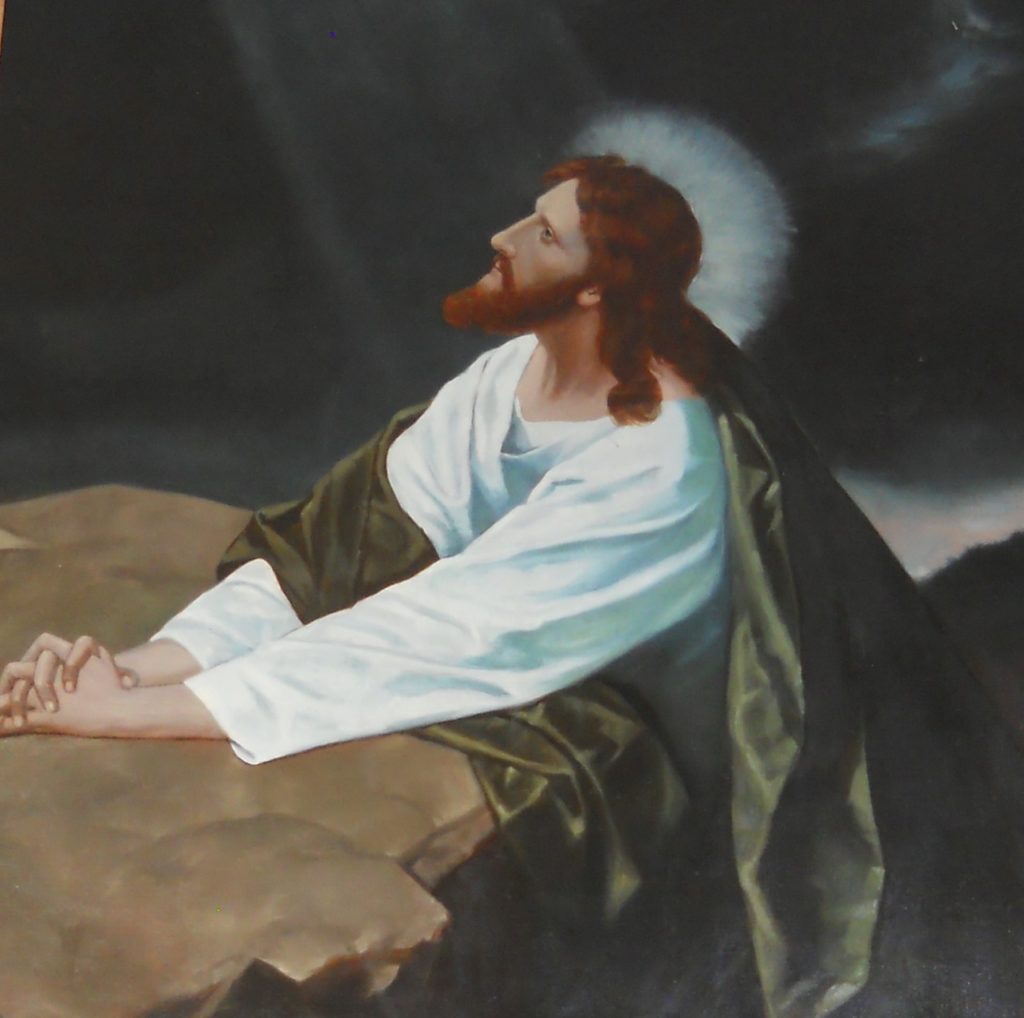
“Christ in Gethesmane” by August Klagstad which currently hangs in the foyer or the Zion Lutheran Church in Manistique.
In the fall of 1887, Klagstad left Manistique to attend the Northern Indiana Normal School (now Valparaiso University) in Valparaiso, Indiana. He enrolled in the Preparatory Department with the intention of gaining future employment as a bookkeeper. But the normal school also had an excellent Fine Arts Department whose faculty included Professor Felix Ekblad, an accomplished artist from Sweden. Ekblad observed Klagstad’s natural artistic ability and encouraged him to develop his skills. So inspired, Klagstad obtained employment at a studio in Chicago and took art lessons on Saturdays. He studied at both the Art Institute in Chicago and the Chicago Academy of Fine Arts. He later worked in art studios in New York and Boston and visited museums and art galleries throughout Europe.
Klagstad’s first altar painting was completed in Manistique in August of 1893 while vacationing from Chicago. The painting, “Christ in Gethsemane” was a copy of a work by celebrated German artist Heinrich Hofmann. Klagstad used a black and white photo of the original and relied on his own artistic creativity to select the colors. The painting first adorned the altar of the Norwegian Danish Lutheran Church in Manistique, and has continued on display in houses of worship for the past 120 years.
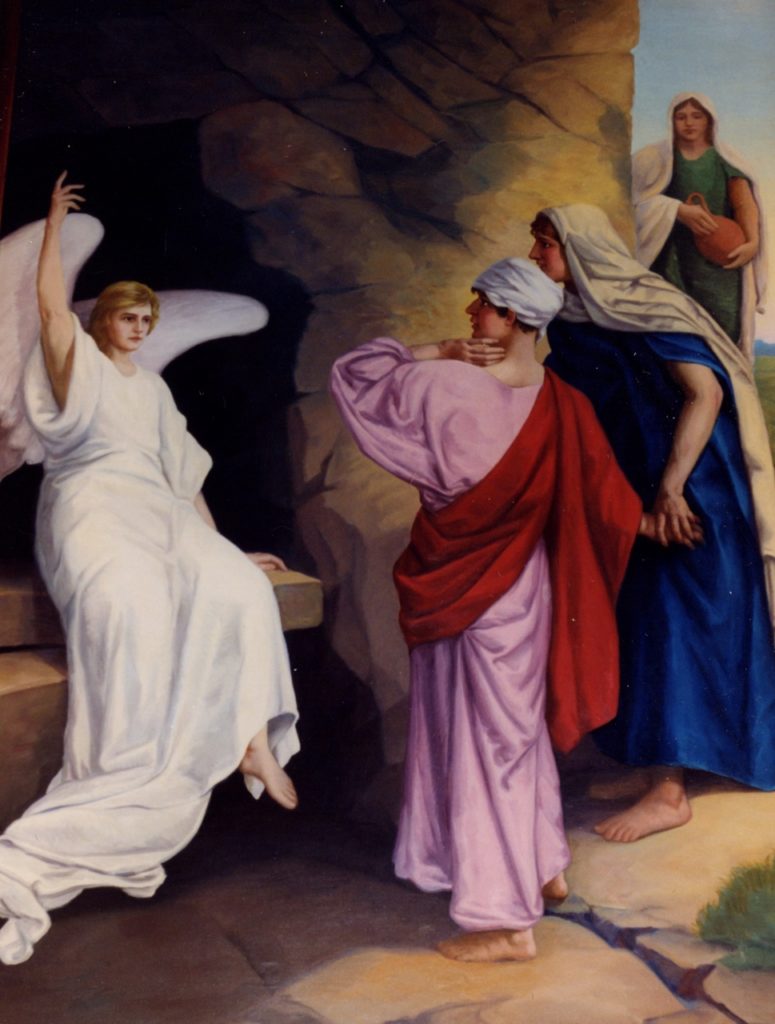
“He is Risen” an altar painting by August Klagstad courtesy of the Minderkirken Norwegian Memorial Lutheran Church in Minneapolis, Minnesota. The painting is a copy of an original masterpiece by Alex Ender.
After moving to Marinette, Wisconsin, in 1895, Klagstad opened a studio there and began to specialize in altar paintings. His images were replicas of religious paintings by the masters which were well-known to church goers of his day. Klagstad added his own original colors and background details.
In August of 1897, Klagstad married Othelia Ness in a ceremony at the Norwegian Danish Lutheran Church in Manistique. This union produced four children, Arnold, Rudolph, Alice and Leslie, all born in Marinette.
Klagstad moved his studio from Marinette, Wisconsin to Minneapolis, Minnesota in 1915. There he expanded his studio operations to include church furnishings and pews. Two of his sons, Leslie and Arnold Ness Klagstad joined his studio in 1938. Arnold Klagstad became a talented and well-known artist in his own right, while Leslie managed the furnishing side of the business.
During his long career, August Klagstad produced over 1000 altar paintings which were shipped to churches throughout the United States, as well as Canada, Norway, Australia and Africa. August Klagstad died in March of 1949 in Minneapolis at the age of 82, but his art lives on in communities large and small.
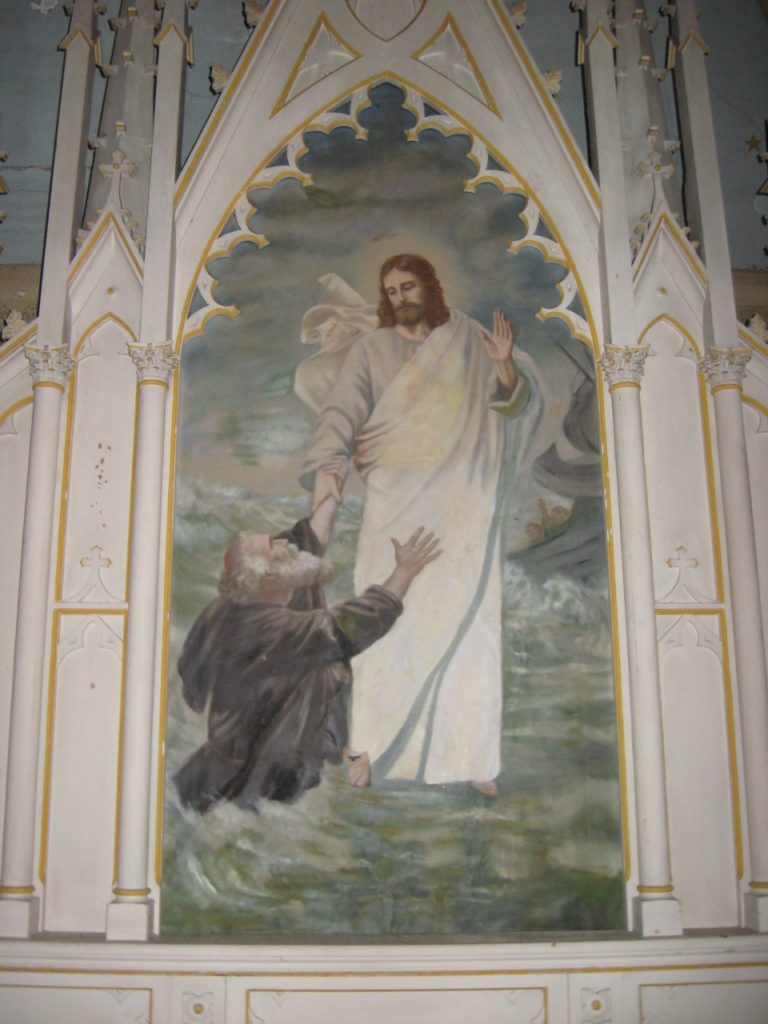
August Klagstad altar painting showing Christ’s rescue of Peter, courtesy of Norwegian Lutheran Church in Calumet, MI,
